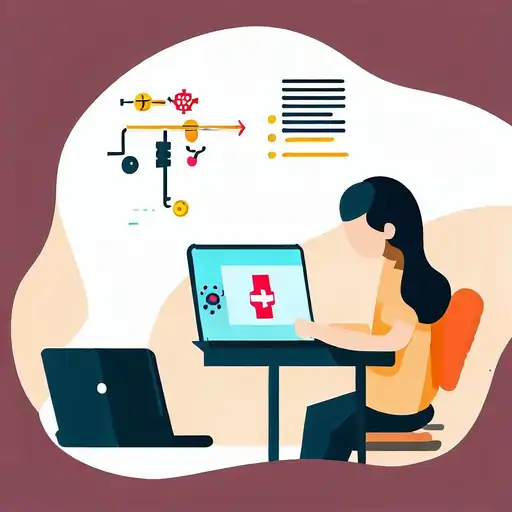Effective Techniques for GUI Testing and Debugging in MATLAB Assignments

GUIs, or graphical user interfaces, have grown to be an essential component of contemporary software programs, and MATLAB is no exception. MATLAB is a well-liked option for engineers, scientists, and students alike due to its extensive capabilities for numerical computation and data visualization. Making sure the dependability and robustness of these interfaces becomes essential because MATLAB assignments frequently involve the development of GUIs to improve user interaction and streamline data processing. In order to ensure that MATLAB Assignment Experts assignments with GUIs deliver accurate results and offer a seamless user experience, GUI testing, and debugging are crucial to achieving this goal because they help identify and fix potential problems.
To make sure that the GUI satisfies the desired requirements and specifications, a thorough evaluation of the GUI's functionality, usability, and performance is conducted during GUI testing. Real-time interactions with GUI elements like buttons, sliders, and input fields are possible during manual testing to verify their functionality. However, automated testing uses scripting and testing frameworks to simulate user interactions in a systematic way and contrast expected results with actual ones. If you need help with GUI Assignments, automated testing can prove particularly valuable. Another crucial component of GUI testing is stress testing, which measures how well the GUI performs under challenging circumstances like high user loads or resource constraints. Developers can enhance the GUI's effectiveness and responsiveness to find performance bottlenecks and memory leaks through stress testing, ensuring it is stable even in difficult conditions. Debugging is a process that works in conjunction with testing to find and fix problems that come up during GUI development. The quality of the MATLAB assignments' GUIs is improved by using methods like error message handling, breakpoint use, and logging to help systematically find and fix bugs. This blog will discuss various GUI testing and debugging techniques for MATLAB assignments, giving programmers and students the information and resources they need to create dependable and approachable GUIs for their applications.

Understanding GUI Testing
In MATLAB, graphical user interfaces (GUIs) are crucial for enhancing user interaction and enhancing the user experience in general. However, creating GUIs can be challenging, and mistakes can happen when putting them into use. In order to find and address problems, GUI testing involves assessing the performance, usability, and functionality of the interface.
Manual Testing
The primary method of GUI testing in MATLAB assignments is manual testing. The GUI elements, such as buttons, sliders, and input fields, must be manually executed to make sure they function as intended. Manual testing enables a real-time evaluation of the GUI's usability and functionality. The interface can be used by testers to interact with, provide various inputs, and watch the results in order to spot any anomalies or unexpected behaviors.
For small to medium-sized MATLAB assignments with relatively straightforward GUIs, manual testing is especially helpful. Testers can verify that each GUI component works as intended and produces the desired results by following predefined test cases and user scenarios.
Manual testing, however, becomes time-consuming and error-prone as GUI complexity rises. It might not be possible to manually account for every scenario, which could result in problems that are not yet known to exist. Automated testing saves the day in these circumstances.
Automated Testing
For MATLAB assignments requiring repeated testing or complex GUIs, automated testing is a useful strategy. The GUI testing process can be automated with the help of MATLAB's scripts and Unit Testing Framework. These tests are capable of simulating user interactions, checking the accuracy of GUI responses, and contrasting expected and actual results.
Automated testing reduces the possibility of human error in the testing process by allowing you to write test scripts that methodically cover a range of use cases and edge scenarios. This method is very effective at finding regressions and making sure that new GUI updates or changes don't break existing functionality.
Automated testing also supports Continuous Integration (CI) and Continuous Deployment (CD) pipelines, allowing developers to automatically run tests whenever changes are pushed to the codebase. This aids in identifying potential problems early in the development cycle, enabling quicker feedback and improved teamwork.
Stress Testing
Stress testing measures how the GUI functions under challenging circumstances, such as heavy user loads or resource limitations. It's possible for MATLAB assignments to involve GUIs that manage complex computations or extensive data processing. Stress testing identifies memory leaks and performance bottlenecks that could slow down or crash the application.
You can use tools and scripts that simulate a high number of concurrent users or a lot of data inputs to perform stress testing by taxing the GUI's resources. During stress testing, you can identify areas that need optimization or handle resource-intensive operations more effectively by carefully monitoring system resources and response times.
Stress testing is essential to ensuring that your MATLAB GUI maintains stability and responsiveness under demanding conditions in real-world usage scenarios. You can improve the overall user experience by taking preventative measures by identifying potential performance issues beforehand.
GUI Debugging Techniques
The process of debugging software is essential, and MATLAB GUIs are no exception. Early bug detection and repair can reduce downtime and guard against mistakes that could produce inaccurate outcomes. Let's look at some efficient GUI debugging methods.
Error Message Handling
Useful error messages must be implemented in your MATLAB GUI to give users clear feedback when something goes wrong. These messages ought to be simple to understand and provide information on the error's root cause. Correct error handling helps users identify the issue and avoids unexpected crashes.
The GUI should have error detection and graceful processing built in. Users may find it annoying when an error message is displayed that lacks specifics, and developers may find it more difficult to troubleshoot. Instead, whenever possible, personalize error messages to explain the problem encountered and offer potential solutions.
For instance, an error message should ask the user for valid numerical data if they try to enter non-numeric characters in a numeric field. The error message should also specify the missing input and instruct the user on what needs to be filled in if a required input field is left empty.
Consider logging errors on the server side in addition to displaying error messages to users to record specific details about the type and frequency of errors encountered. This log can help you identify persistent problems and efficiently prioritize your debugging efforts.
Using Breakpoints
In MATLAB, breakpoints are an effective debugging tool. Breakpoints allow you to pause the execution of your code so that you can inspect variables, data, and the program's flow. Place breakpoints at key points in your code. This enables you to examine the GUI's state at a particular moment, assisting you in finding the cause of errors and unexpected behavior.
When a breakpoint is hit while the GUI is running, MATLAB switches to debug mode, allowing you to step by step inspect the internal state of the GUI. If you want to know how the GUI responds in various situations, you can look at the values of variables, confirm that conditions are satisfied, and follow the execution flow.
Breakpoints are particularly useful when you come across sporadic bugs or when you believe a certain section of the code is the source of issues. You can pinpoint the problematic area and direct your debugging efforts thereby carefully placing breakpoints and stepping through the code.
Common GUI Testing and Debugging Challenges
The process of testing and debugging MATLAB assignments with GUIs can be complicated for a number of reasons. For these problems to be effectively solved, understanding is crucial.
Asynchronous Operations
Asynchronous operations, in which various tasks are carried out concurrently or independently, are frequently used in MATLAB GUIs. For instance, a GUI may be responding to user inputs and refreshing the interface while performing a time-consuming computation in the background. Asynchronous operations can be challenging to manage because they can result in unforeseen interactions and data conflicts.
Consider developing test cases that simulate simultaneous events and inputs in order to test GUIs with asynchronous operations effectively. Write tests to confirm that user actions do not conflict with one another, for instance, if a GUI enables users to perform multiple actions simultaneously.
Pay close attention to data synchronization as well as making sure background processes don't impede the responsiveness of the GUI. In order to guarantee that the GUI is reliable and stable in all circumstances, appropriate thread management and synchronization mechanisms are required.
GUI Responsiveness
A seamless user experience depends on the GUI's responsiveness. Interfaces that are sluggish or unresponsive can annoy users and make the GUI less usable. Testing should concentrate on determining the average response time for various actions and pinpointing areas that need to be optimized to improve responsiveness.
Excessive computational load or resource-intensive operations are one common reason for GUI responsiveness problems. Consider optimizing key sections of your code and using parallel processing to split computations across multiple cores or threads.
Pay attention to GUI components that may take longer to load or refresh as well. For instance, to prevent rendering delays, make sure large plots or data visualizations in a GUI are efficiently generated and displayed.
Conclusion
Exciting opportunities for building user-friendly and interactive applications are made possible by developing GUIs for MATLAB assignments. The burden of making sure that these GUIs are thoroughly tested and debugged to maintain their dependability, though, comes with the increased functionality.
For MATLAB assignments, we looked at a variety of GUI testing and debugging techniques in this blog. We talked about manual and automated testing methods, performance evaluation using stress testing, and the significance of error handling and logging in debugging. We also emphasized typical difficulties programmers may experience when using MATLAB GUIs.
You can create MATLAB assignments that deliver precise results, provide a seamless user experience, and withstand the test of various usage scenarios by using these GUI testing and debugging techniques. Coding is fun!